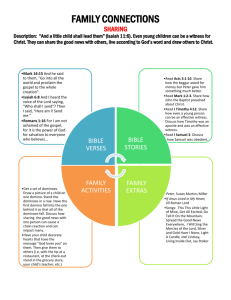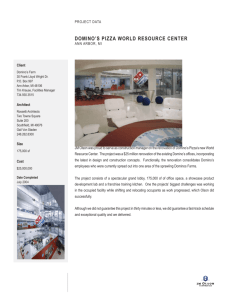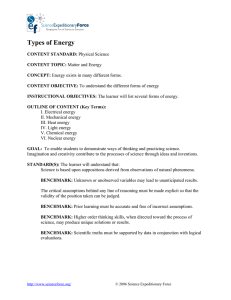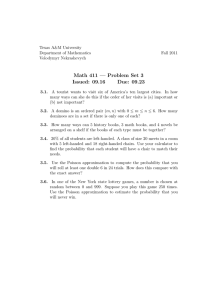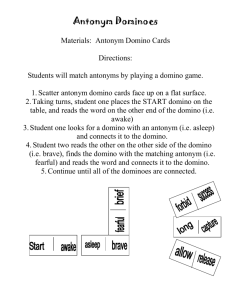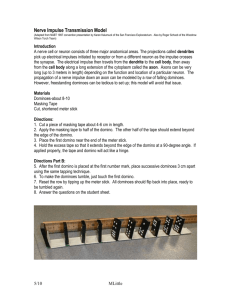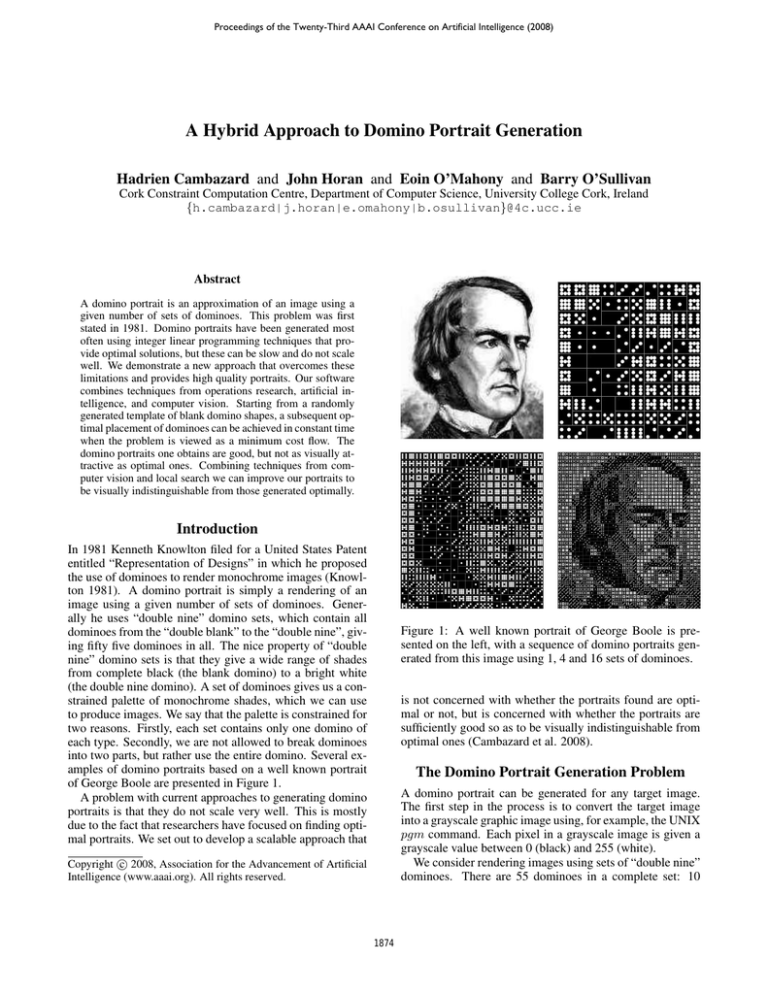
Proceedings of the Twenty-Third AAAI Conference on Artificial Intelligence (2008)
A Hybrid Approach to Domino Portrait Generation
Hadrien Cambazard and John Horan and Eoin O’Mahony and Barry O’Sullivan
Cork Constraint Computation Centre, Department of Computer Science, University College Cork, Ireland
{h.cambazard|j.horan|e.omahony|b.osullivan}@4c.ucc.ie
Abstract
A domino portrait is an approximation of an image using a
given number of sets of dominoes. This problem was first
stated in 1981. Domino portraits have been generated most
often using integer linear programming techniques that provide optimal solutions, but these can be slow and do not scale
well. We demonstrate a new approach that overcomes these
limitations and provides high quality portraits. Our software
combines techniques from operations research, artificial intelligence, and computer vision. Starting from a randomly
generated template of blank domino shapes, a subsequent optimal placement of dominoes can be achieved in constant time
when the problem is viewed as a minimum cost flow. The
domino portraits one obtains are good, but not as visually attractive as optimal ones. Combining techniques from computer vision and local search we can improve our portraits to
be visually indistinguishable from those generated optimally.
Introduction
In 1981 Kenneth Knowlton filed for a United States Patent
entitled “Representation of Designs” in which he proposed
the use of dominoes to render monochrome images (Knowlton 1981). A domino portrait is simply a rendering of an
image using a given number of sets of dominoes. Generally he uses “double nine” domino sets, which contain all
dominoes from the “double blank” to the “double nine”, giving fifty five dominoes in all. The nice property of “double
nine” domino sets is that they give a wide range of shades
from complete black (the blank domino) to a bright white
(the double nine domino). A set of dominoes gives us a constrained palette of monochrome shades, which we can use
to produce images. We say that the palette is constrained for
two reasons. Firstly, each set contains only one domino of
each type. Secondly, we are not allowed to break dominoes
into two parts, but rather use the entire domino. Several examples of domino portraits based on a well known portrait
of George Boole are presented in Figure 1.
A problem with current approaches to generating domino
portraits is that they do not scale very well. This is mostly
due to the fact that researchers have focused on finding optimal portraits. We set out to develop a scalable approach that
Figure 1: A well known portrait of George Boole is presented on the left, with a sequence of domino portraits generated from this image using 1, 4 and 16 sets of dominoes.
is not concerned with whether the portraits found are optimal or not, but is concerned with whether the portraits are
sufficiently good so as to be visually indistinguishable from
optimal ones (Cambazard et al. 2008).
The Domino Portrait Generation Problem
A domino portrait can be generated for any target image.
The first step in the process is to convert the target image
into a grayscale graphic image using, for example, the UNIX
pgm command. Each pixel in a grayscale image is given a
grayscale value between 0 (black) and 255 (white).
We consider rendering images using sets of “double nine”
dominoes. There are 55 dominoes in a complete set: 10
c 2008, Association for the Advancement of Artificial
Copyright Intelligence (www.aaai.org). All rights reserved.
1874
with equal face values in both halves, i.e. all dominoes
with face valuations equal to (0, 0), . . . , (9, 9) along with an
additional 45 non-equal face dominoes with face values in
{(v1 , v2 )|v1 ∈ {0, . . . , 8}, v2 ∈ {v1 + 1, . . . , 9}}. The surface covered by a single set of dominoes is 110 square units,
since we have 55 dominoes each with 2 units. Therefore,
given s2 sets of dominoes, the grayscale image can be divided into 11s × 10s cells and for each cell in row ri and
column ci the mean grayscale value is computed and scaled
to an integer between 0 and 9 called gij . The value in each
cell specifies the perfect half domino to place in that cell.
Each domino with equal valued halves has two possible orientations, vertical and horizontal, whereas each nonequal valued domino has four orientations since such a
domino can be flipped along its vertical and horizontal axes.
While for k = s2 sets we could use a canvas of size 11s×10s
to be filled with the 55×k dominoes, in practice we can represent any canvas of size 110 × k cells. The cost of positioning a half-domino pql on a cell (ri , cj ) is equal to (pql − gij )2 .
Notice that it is quadratic so that the cost grows faster than
the error and large errors are strongly penalised. The problem is to place the dominoes on the canvas so that the overall
cost (the sum of the costs of each cell of the canvas) is minimised and every domino is used exactly once. A graphical
representation of the process is presented in Figure 2.
(a) The image is divided into cells and
the grayscale values
averaged in each.
a traditional assignment problem, which can be solved using
the Hungarian Method, we formulate it as a minimum cost
flow. The flow formulation allows us to solve the assignment problem in constant time by breaking many symmetries. These symmetries arise from the fact that each domino
is repeated k times, and there are at most 55 possible pairs of
costs for an empty outline. The outlines of identical cost can,
therefore, be gathered into areas. As a result, we only need
to know how many dominoes of each kind are assigned in
each area, and not where each individual domino is placed.
The flow can be interpreted as the number of dominoes of
each kind assigned to each area. The size of the graph supporting this flow is independent of k making the approach
robust to increases in the number of domino sets we use.
However, because we predetermine the orientations of the
dominoes by choosing a pattern, we are unlikely to find an
optimal domino configuration. Therefore, we adopt a heuristic approach based on large neighborhood search (Shaw
1998) to identify regions of the domino portrait that, if redesigned, would improve its quality. The pattern only matters where the grey values are unbalanced, since uniform
areas have almost no effect on the final cost. We use an
algorithm from computer vision that performs corner detection, or interest point detection (Rosten, Reitmayr, and
Drummond 2005), to extract certain kinds of features to infer the contents of an image. This approach seems suitable
for portraits as it highlights the important characteristics of
the face (eyes, mouth, hair, etc.) which matter in the final
domino portrait, and suggests where it might be worthwhile
improving the pattern.
Several orders-of-magnitude in runtime are obtained by
this approach over current methods. It does not provide optimal solutions but produces high quality portraits within seconds, while remaining robust to increases in the size of the
problem.
(b) The averaged (c) An example of a
grayscale values are domino portrait.
scaled to the range
0 . . . 9.
Acknowledgements
This work was supported by Science Foundation Ireland
(Grant 05/IN/I886). We thank Robert Bosch for providing
the inspiration for tackling this problem and useful feedback.
Figure 2: A summary of the process of generating a domino
portrait from an image.
References
Bosch, R. 2004. Constructing domino portraits. Tribute to
a Mathemagician 251–256.
Cambazard, H.; Horan, J.; O’Mahony, E.; and O’Sullivan,
B. 2008. Fast and scalable domino portrait generation. In
Proceedings of CP-AI-OR 2008, 51–65. LNCS 5015.
Knowlton, K. C. 1981. Representation of designs. U.S.
Patent # 4,398,890 (Awarded August 16th, 1983).
Knuth, D. E. 1993. The Stanford GraphBase: A Platform
for Combinatorial Computing. Addison-Wesley.
Rosten, E.; Reitmayr, G.; and Drummond, T. 2005. Realtime video annotations for augmented reality. In ISVC,
294–302.
Shaw, P. 1998. Using constraint programming and local
search methods to solve vehicle routing problems. In CP,
417–431.
Approach
Robert Bosch proposed an integer linear programming
formulation of the domino portrait generation problem
in (Bosch 2004), but the resulting integer programs are quite
large, with more than one million decision variables and five
thousand constraints for k = 49. We adopt an approach
similar to Knowlton’s (Knowlton 1981) and Knuth’s (Knuth
1993), in which the image is divided up into blank domino
outlines defining a pattern. Our approach relies on the observation that the problem becomes polynomial once the
pattern is known, because it can be modeled as an assignment problem associating 55 × k dominoes with 55 × k
empty outlines. This suggests that restricting ourselves to
searching over alternative patterns is enough to generate optimal domino portraits. Rather than treating this problem as
1875

